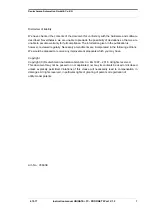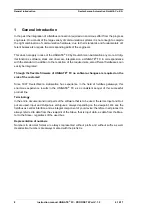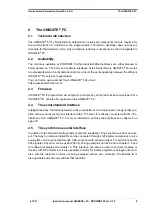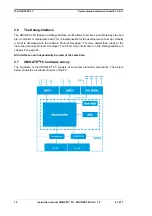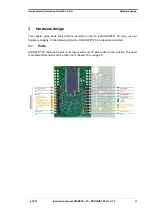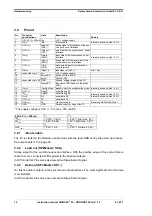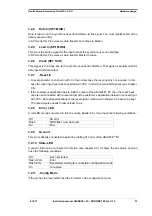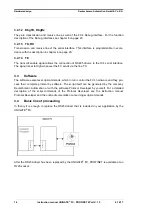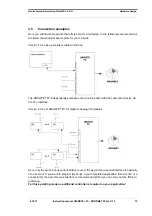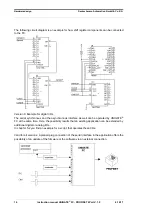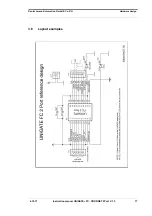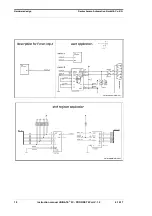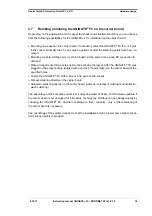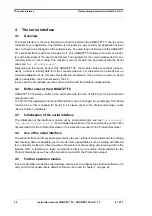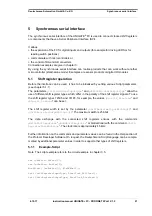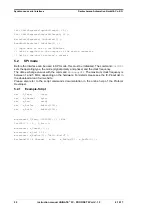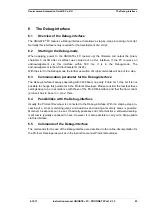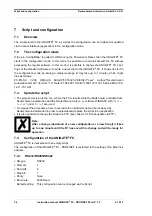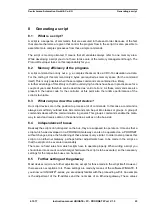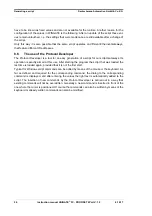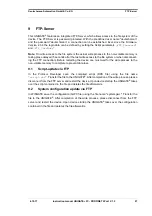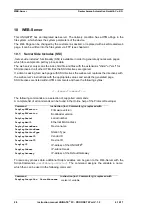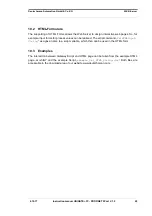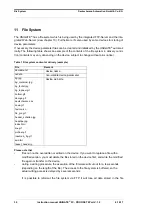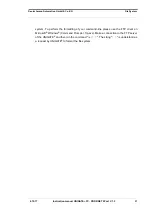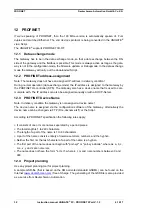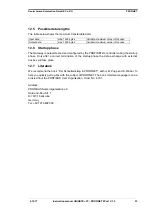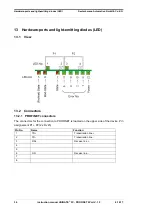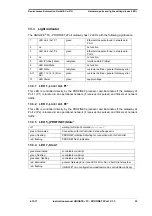
The serial interface
Deutschmann Automation GmbH & Co. KG
20
Instruction manual UNIGATE
®
FC - PROFINET 2Port V. 1.5
4.10.17
4
The serial interface
4.1
Overview
The serial interface is the most important connection between the UNIGATE
®
FC and the micro
controller of your application. The interface is designed in a way so that your application at least
does not have to be changed on the software-side. The wide range of services of the UNIGATE
®
FC’s serial interface constitutes the basis for it. The UNIGATE
®
FC allows to connect of control-
lers with a baudrate of 110 baud to 520 kbaud. The baudrate for the communication itself is per-
manently stored in the module. The maximum size for IO-data can be read-out with the Script
command “
Get RSOutBufFree16
“.
Depending on the read-in Script of the UNIGATE
®
FC, the module carries out actions indepen-
dently, in order to identify data from the connected device. For customers who already have a
software-adaptation at he company Deutschmann Automation, this protocol as well or a Script
after an adaptation can be processed by the FC.
In any case the FC will take over the communication with the Fieldbus independently.
4.2
Buffer sizes at the UNIGATE
®
FC
UNIGATE
®
FC features a buffer at the serial side with the size of 1024 byte for input data and
output data each.
The FIFO of the application interface (RS-interface) can be changed in any Gateway form Script
revision 26 on, that is capable for Script. For it please check in the Protocol Developer under
„Device Control“-„Hardware“.
4.3
Initialization of the serial interface
The initialization of the interface is carried out by script-commands, such as “
Set baudrate
“,
“
Set databits
“, “
Set parity
“. For a detailed description of these commands see the online
documentation for the Protocol Developer or the instruction manual for the Protocol Developer.
4.4
Use of the serial interface
The serial interface can freely be programmed by the user. Efficient script-commands for sending
and receiving data are available; just to mention some possibilities: such as waiting with timeout
for a character, waiting for a fixed number of characters or also sending and receiving data in the
Modbus RTU. A reference to these commands is offered in the online documentation for the
Protocol Developer as well as in the instruction manual for the Protocol Developer.
4.5
Further operation modes
In the configuration mode the serial interface also serves to configure the standard software or to
carry out a Script-update. More details on that can be found in chapter 7 on page 24.


